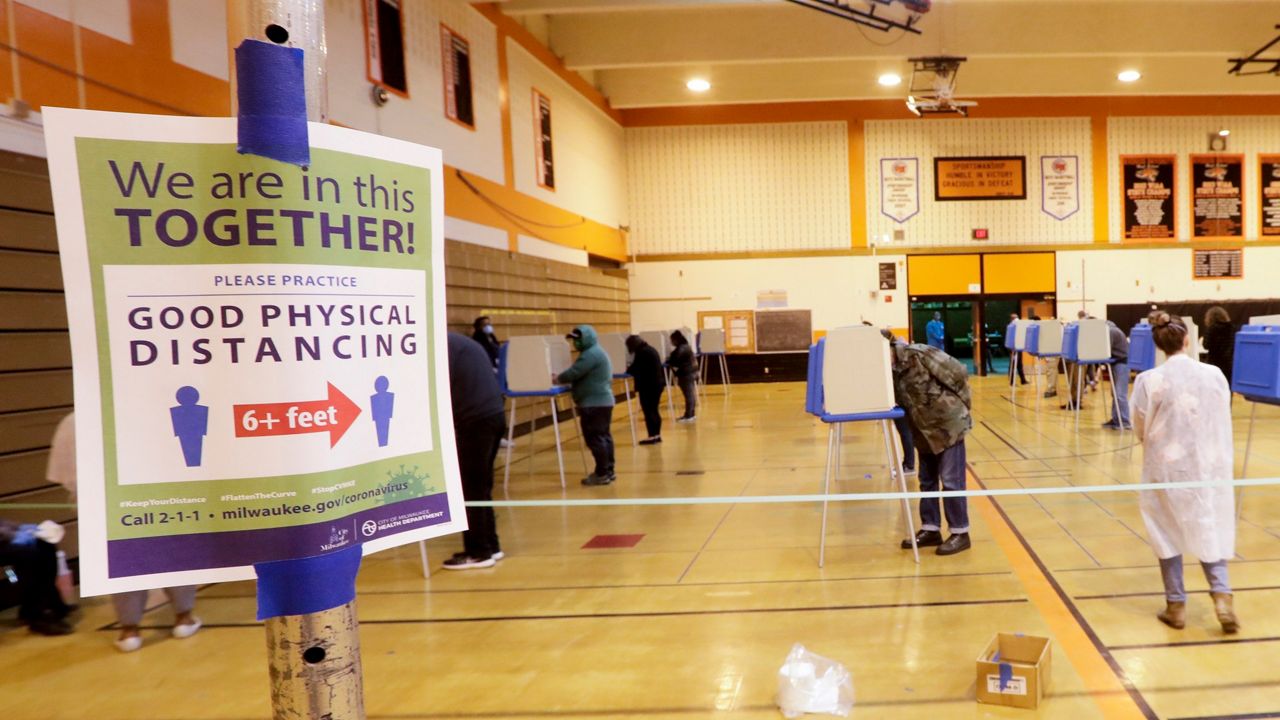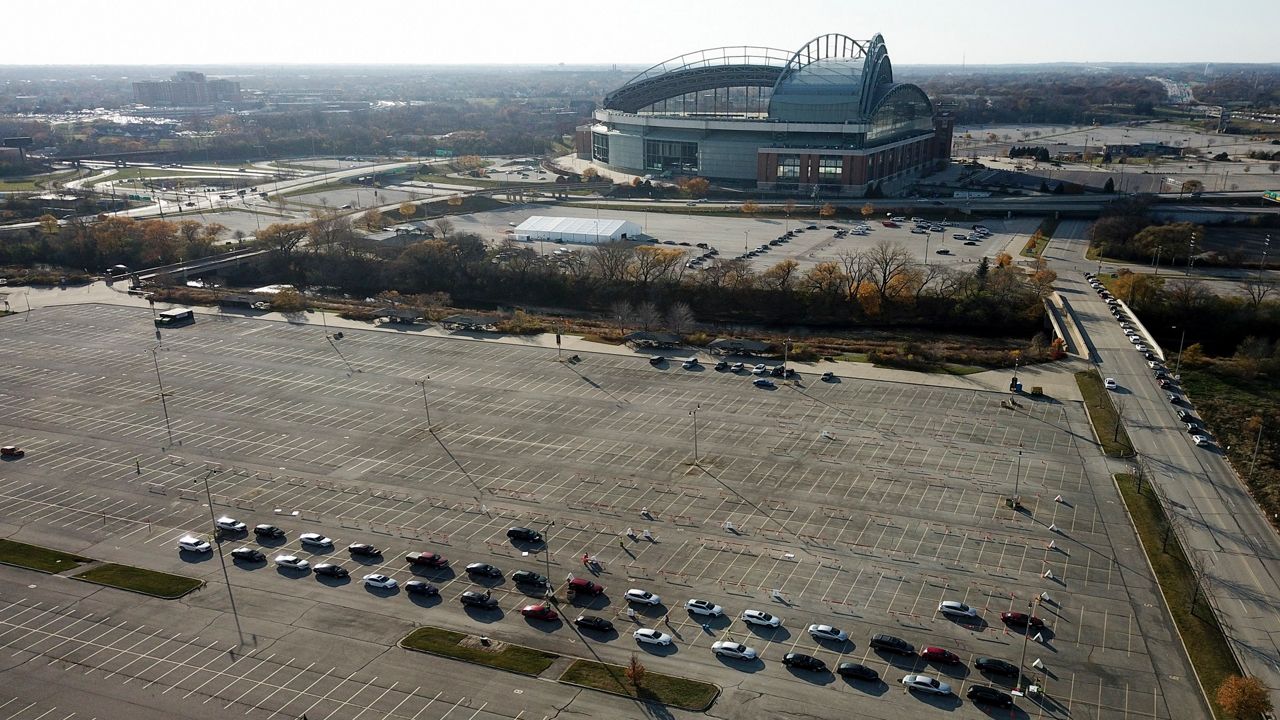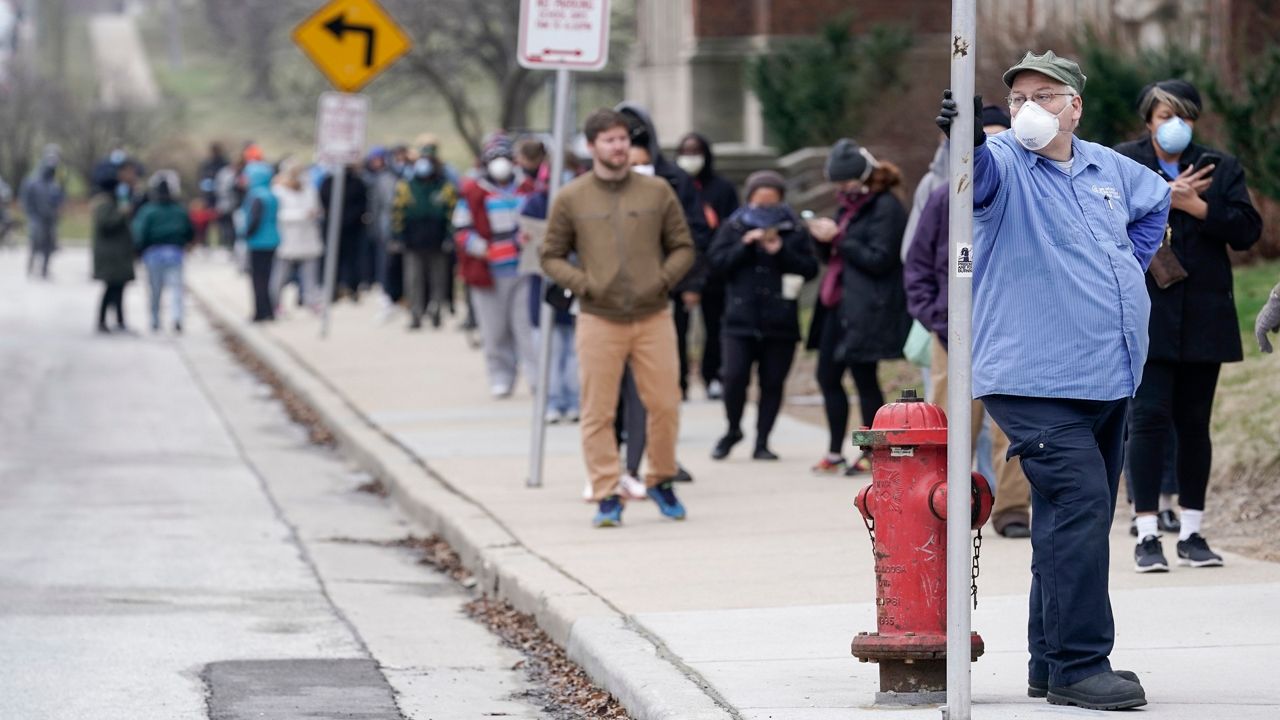MILWAUKEE — On New Year’s Eve of 2019, the news still seemed distant: In the Wuhan province of China, dozens had fallen ill with a mysterious disease.
That puzzling outbreak, of course, would soon make its way across the globe. The novel coronavirus would become the central crisis of 2020, leading to devastating losses and turning our ways of life upside down. It would give us new habits (“mask up!”) and new vocabulary (“social distancing,” “quaranteam,” “zoombombing”).
Now, as our first year with COVID-19 draws to a close, we take a look at some of the countless unprecedented events that defined 2020 in the Badger State.
The early days
DEC 31, 2019: Chinese officials report an outbreak of “viral pneumonia of unknown cause.” Dozens of people had fallen ill in the Wuhan province, health authorities said, but the source was still a mystery. Patients experienced high fever and difficulty breathing — symptoms we’d later use to define COVID-19.
JAN 9: Scientists identify the probable source of the mystery illness: A new coronavirus. Chinese experts announced they had sequenced the virus’s genome and identified viral fragments in 15 of the sick patients.
JAN 11: China reports the first death linked to the virus. The first victim was a 61-year-old man who frequently visited a Wuhan market that was linked to early outbreaks.
JAN 13: Thailand reports a confirmed case, the first to be discovered outside of China. The patient, a tourist from China, was identified as countries began ramping up surveillance efforts for the new virus.
JAN 21: The U.S. reports its first case. The first American patient was a resident of Washington state who had recently traveled to Wuhan, according to the Centers for Disease Control and Prevention. At the time, the CDC said it remained “unclear how easily this virus is spreading between people.”
JAN 31: The U.S. declares a public health emergency and restricts travelers from China. “While this virus poses a serious public health threat, the risk to the American public remains low at this time, and we are working to keep this risk low,” Health and Human Services Secretary Alex Azar said in his declaration.
FEB 5: Wisconsin reports its first confirmed case. When a resident tested positive after being exposed to cases on a trip to Beijing, the state’s Department of Health Services said the risk for the general public was still low.
FEB 11: The disease caused by the novel virus gets its name: COVID-19. The WHO picked the name — now recognized all over the world — to stand for “coronavirus disease 2019.”
MARCH 2: Wisconsin kicks off coronavirus testing in the state. Previously, samples were being sent to the CDC labs in Atlanta.
Spring spread and lockdowns
MARCH 11: The World Health Organization defines COVID-19 as a pandemic. The Director-General urged countries to take aggressive action to stop the spread. “We have rung the alarm bell loud and clear,” he said at a media briefing.
MARCH 13: President Trump declares a state of national emergency. “The spread of COVID-19 within our Nation’s communities threatens to strain our Nation’s healthcare systems,” Trump’s proclamation stated. At the time, COVID-19 had infected 1,645 people across 47 states.
MARCH 19: Wisconsin reports its first two deaths from COVID-19. “Our hearts go out to all the loved ones affected by these deaths, and to all those suffering from this virus,” Gov. Tony Evers said. Four Wisconsin counties had identified community spread by then.
MARCH 24: Evers directs DHS to issue a “Safer At Home” order for the state. The emergency order directed residents to stay at home as much as possible, closed non-essential businesses, and banned gatherings between households. “Here’s the bottom line: Folks need to start taking this seriously,” Evers said when announcing the order.
MARCH 26: Congress passes the CARES Act, kicking off a first round of relief for struggling Americans. Trump signed the bill into law the next day, authorizing $2 trillion for aid including small business loans, expanded unemployment, and $1,200 direct payment checks.
APRIL 4: The world total surpasses 1 million cases. By this point, the U.S. had recorded the most cases and deaths of any country.
APRIL 7: Wisconsin holds its primary election, becoming the first to have widespread in-person voting during the pandemic. More than 400,000 people hit the polls, despite public health concerns and an attempt from Evers to postpone voting.

APRIL 24: Thousands gather at the state capitol in Madison to protest coronavirus lockdowns. It was one of the largest gatherings in the country of residents opposed to stay-at-home orders, according to The New York Times.
MAY 13: The Wisconsin Supreme Court strikes down the state’s “Safer At Home” order. In a 4-3 ruling, the court declared Evers’ emergency order “unlawful, invalid, and unenforceable.” The decision lifted statewide caps on gathering sizes and allowed businesses like bars and restaurants to reopen — leaving more decisions in the hands of county officials.
JULY 3: Evers orders a statewide mask mandate as cases rise in Wisconsin. The order directed all Wisconsinites to wear masks in any enclosed spaces outside the home. It would eventually face legal challenges from opponents in the state.
Fall surges
SEPT 9: UW-Madison moves to online classes after major surges followed students’ return to campus. Citing high positivity rates from campus testing, Chancellor Rebecca Blank paused in-person instruction and quarantined two dorms just a week into the school year.
SEPT 20: Wisconsin’s cases surpass 100,000. After a relatively slow summer, infection rates began to shoot up quickly in mid-September.
OCT 2: The president and First Lady test positive for coronavirus. Trump announced the diagnosis shortly after top aide Hope Hicks also tested positive. The president was briefly hospitalized and treated with an antibody cocktail; dozens of cases were eventually linked to the White House outbreak.
OCT 6: A new emergency order limits indoor capacity across Wisconsin. Evers’ order directed bars, restaurants, and other businesses to only fill their spaces to 25% capacity. The order sparked a slew of legal battles, and was first blocked, then reinstated by state judges.

OCT 14: The Alternate Care Facility at Wisconsin’s State Fair Park opens up to accept patients from overwhelmed hospitals. The field hospital, which state officials had referred to as the “ultimate insurance policy” in case of dramatic outbreaks, has cared for more than 160 people since it started accepting overflow patients.
NOV 4: The U.S. reports 100,000 daily cases for the first time, right after a historic presidential election. That daily total was a new record for the country and the world — but would continue to grow.
NOV 18: Wisconsin’s daily cases reach a record 7,989, the peak of the state’s intense fall surge. “As scary as this picture is, it is going to keep getting worse before it gets better,” DHS Secretary-designee Andrea Palm said while announcing the new cases. Days later, Evers announced a new emergency order and extended the state’s mask mandate.
Vaccine hope to end the year
DEC 11: The FDA approves Pfizer’s vaccine for emergency use. The vaccine — which was found to be 95% effective in clinical trials — became the first COVID-19 vaccine and the first mRNA-based drug to be authorized in the country. FDA Commissioner Stephen M. Hahn called the vaccine effort “a true testament to scientific innovation and public-private collaboration worldwide.”
DEC 14: The first COVID-19 vaccines are given out to health care workers in Wisconsin. (link) As doses started shipping out across the U.S., high-priority Wisconsinites got their first round of shots. A respiratory therapist at UW Health received the first dose announced in the state: “I feel hopeful and happy that the vaccine is here,” she said. “We need to save more lives, and I think this is the way to do it.”
HISTORIC MOMENT: Respiratory Therapist Tina Schubert became the first of @UWHealth's healthcare workers to receive the Pfizer #COVID19 vaccine at approx. 2:30 p.m. CT! pic.twitter.com/Fqwh5APGka
— Spectrum News 1 Wisconsin (@SpectrumNews1WI) December 14, 2020
DEC 19: Moderna’s vaccine gets authorization too, giving immunizations a boost across the country. The shots — which were around 94% effective in trials — are similar to Pfizer’s, but can be stored at less extreme temperatures, making it easier to distribute doses. Both vaccines are now being distributed across the country.
DEC 26: Wisconsin’s new infections continue to dip, reaching their lowest point since September. The day after Christmas, Wisconsin recorded 632 new cases and a seven-day average of 1,882 — both significantly down from fall levels. Death rates remain high as the year draws to a close, but the dip in infections is a promising sign.
DEC 28: Seniors in Wisconsin’s long-term care facilities start getting their shots, too. With the arrival of the Moderna shots, vaccine distribution has been expanding in the state: More than 47,000 Wisconsinites have gotten their shots as of Tuesday, the DHS reports. Pharmacies have started giving out doses to staff and residents at long-term care facilities.
“Words can’t express the relief, the excitement, the happiness that all of us feel,” one RN told Spectrum News 1.



